Enhanced Nociception in Angelman Syndrome Model Mice
- PMID: 28931574
- PMCID: PMC5647775
- DOI: 10.1523/JNEUROSCI.1018-17.2017
Enhanced Nociception in Angelman Syndrome Model Mice
Abstract
Angelman syndrome (AS) is a severe neurodevelopmental disorder caused by mutation or deletion of the maternal UBE3A allele. The maternal UBE3A allele is expressed in nearly all neurons of the brain and spinal cord, whereas the paternal UBE3A allele is repressed by an extremely long antisense transcript (UBE3A-ATS). Little is known about expression of UBE3A in the peripheral nervous system, where loss of maternal UBE3A might contribute to AS phenotypes. Here we sought to examine maternal and paternal Ube3a expression in DRGs neurons and to evaluate whether nociceptive responses were affected in AS model mice (global deletion of maternal Ube3a allele; Ube3am-/p+). We found that most large-diameter proprioceptive and mechanosensitive DRG neurons expressed maternal Ube3a and paternal Ube3a-ATS In contrast, most small-diameter neurons expressed Ube3a biallelically and had low to undetectable levels of Ube3a-ATS Analysis of single-cell DRG transcriptomes further suggested that Ube3a is expressed monoallelically in myelinated large-diameter neurons and biallelically in unmyelinated small-diameter neurons. Behavioral responses to some noxious thermal and mechanical stimuli were enhanced in male and female AS model mice; however, nociceptive responses were not altered by the conditional deletion of maternal Ube3a in the DRG. These data suggest that the enhanced nociceptive responses in AS model mice are due to loss of maternal Ube3a in the central, but not peripheral, nervous system. Our study provides new insights into sensory processing deficits associated with AS.SIGNIFICANCE STATEMENT Angelman syndrome (AS) is a neurodevelopmental disorder caused by loss or mutation of the maternal UBE3A allele. While sensory processing deficits are frequently associated with AS, it is currently unknown whether Ube3a is expressed in peripheral sensory neurons or whether maternal deletion of Ube3a affects somatosensory responses. Here, we found that Ube3a is primarily expressed from the maternally inherited allele in myelinated large-diameter sensory neurons and biallelically expressed in unmyelinated small-diameter neurons. Nociceptive responses to select noxious thermal and mechanical stimuli were enhanced following global, but not sensory neuron-specific, deletion of maternal Ube3a in mice. These data suggest that maternal loss of Ube3a affects nociception via a central, but not peripheral mechanism, with implications for AS.
Keywords: Angelman syndrome; Ube3a; nociception.
Copyright © 2017 the authors 0270-6474/17/3710230-10$15.00/0.
Figures
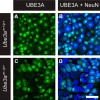
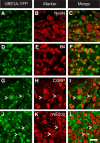
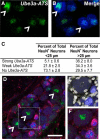

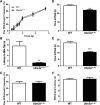


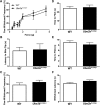

Similar articles
-
Ube3a loss increases excitability and blunts orientation tuning in the visual cortex of Angelman syndrome model mice.J Neurophysiol. 2017 Jul 1;118(1):634-646. doi: 10.1152/jn.00618.2016. Epub 2017 May 3. J Neurophysiol. 2017. PMID: 28468997 Free PMC article.
-
Hypersociability in the Angelman syndrome mouse model.Exp Neurol. 2017 Jul;293:137-143. doi: 10.1016/j.expneurol.2017.04.002. Epub 2017 Apr 11. Exp Neurol. 2017. PMID: 28411125 Free PMC article.
-
Altered ultrasonic vocalization and impaired learning and memory in Angelman syndrome mouse model with a large maternal deletion from Ube3a to Gabrb3.PLoS One. 2010 Aug 20;5(8):e12278. doi: 10.1371/journal.pone.0012278. PLoS One. 2010. PMID: 20808828 Free PMC article.
-
Angelman syndrome: insights into genomic imprinting and neurodevelopmental phenotypes.Trends Neurosci. 2011 Jun;34(6):293-303. doi: 10.1016/j.tins.2011.04.001. Epub 2011 May 17. Trends Neurosci. 2011. PMID: 21592595 Free PMC article. Review.
-
Angelman syndrome - insights into a rare neurogenetic disorder.Nat Rev Neurol. 2016 Oct;12(10):584-93. doi: 10.1038/nrneurol.2016.133. Epub 2016 Sep 12. Nat Rev Neurol. 2016. PMID: 27615419 Review.
Cited by
-
Spatial and Temporal Gene Function Studies in Rodents: Towards Gene-Based Therapies for Autism Spectrum Disorder.Genes (Basel). 2021 Dec 23;13(1):28. doi: 10.3390/genes13010028. Genes (Basel). 2021. PMID: 35052369 Free PMC article. Review.
-
Mechanisms of Tactile Sensory Phenotypes in Autism: Current Understanding and Future Directions for Research.Curr Psychiatry Rep. 2019 Dec 5;21(12):134. doi: 10.1007/s11920-019-1122-0. Curr Psychiatry Rep. 2019. PMID: 31807945 Free PMC article. Review.
-
Altered nociceptive behavior and emotional contagion of pain in mouse models of autism.Genes Brain Behav. 2022 Jan;21(1):e12778. doi: 10.1111/gbb.12778. Epub 2021 Nov 23. Genes Brain Behav. 2022. PMID: 34812576 Free PMC article.
-
Linoleic acid improves PIEZO2 dysfunction in a mouse model of Angelman Syndrome.Nat Commun. 2023 Mar 1;14(1):1167. doi: 10.1038/s41467-023-36818-0. Nat Commun. 2023. PMID: 36859399 Free PMC article.
-
Sex-Dependent Sensory Phenotypes and Related Transcriptomic Expression Profiles Are Differentially Affected by Angelman Syndrome.Mol Neurobiol. 2019 Sep;56(9):5998-6016. doi: 10.1007/s12035-019-1503-8. Epub 2019 Jan 31. Mol Neurobiol. 2019. PMID: 30706369
References
-
- Artigas-Pallarés J, Brun-Gasca C, Gabau-Vila E, Guitart-Feliubadaló M, Camprubi-Sánchez C (2005) [Medical and behavioural aspects of Angelman syndrome]. Rev Neurol 41:649–656. - PubMed
Publication types
MeSH terms
Substances
Grants and funding
LinkOut - more resources
Full Text Sources
Other Literature Sources
Molecular Biology Databases
Research Materials
